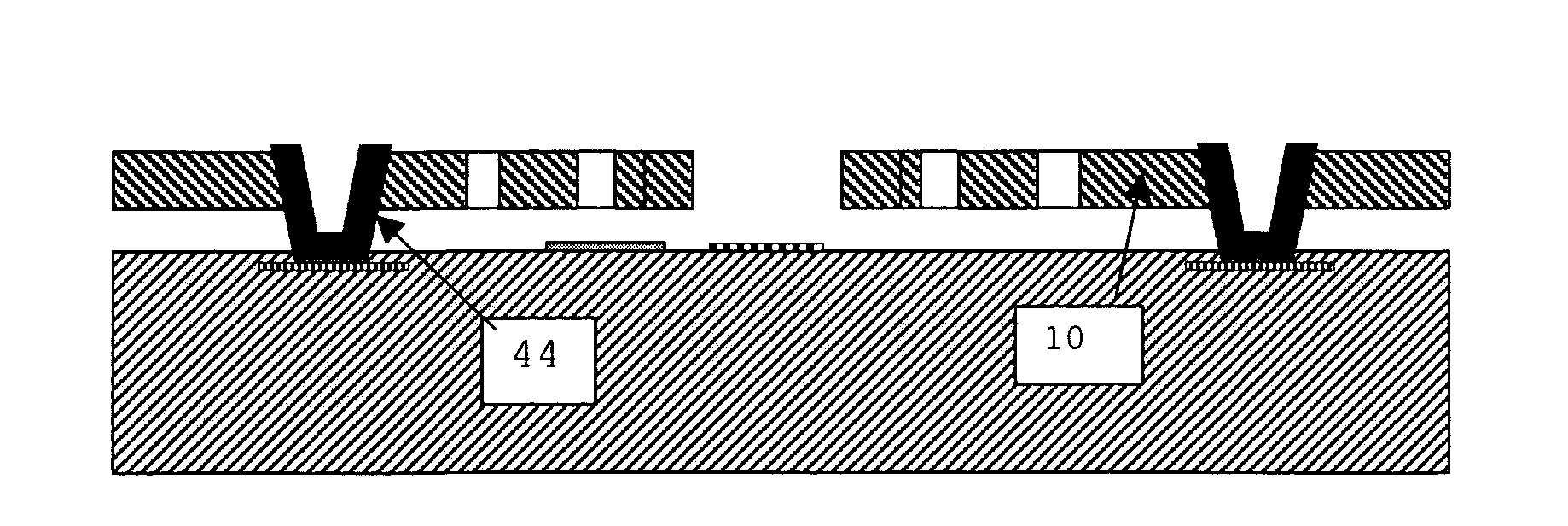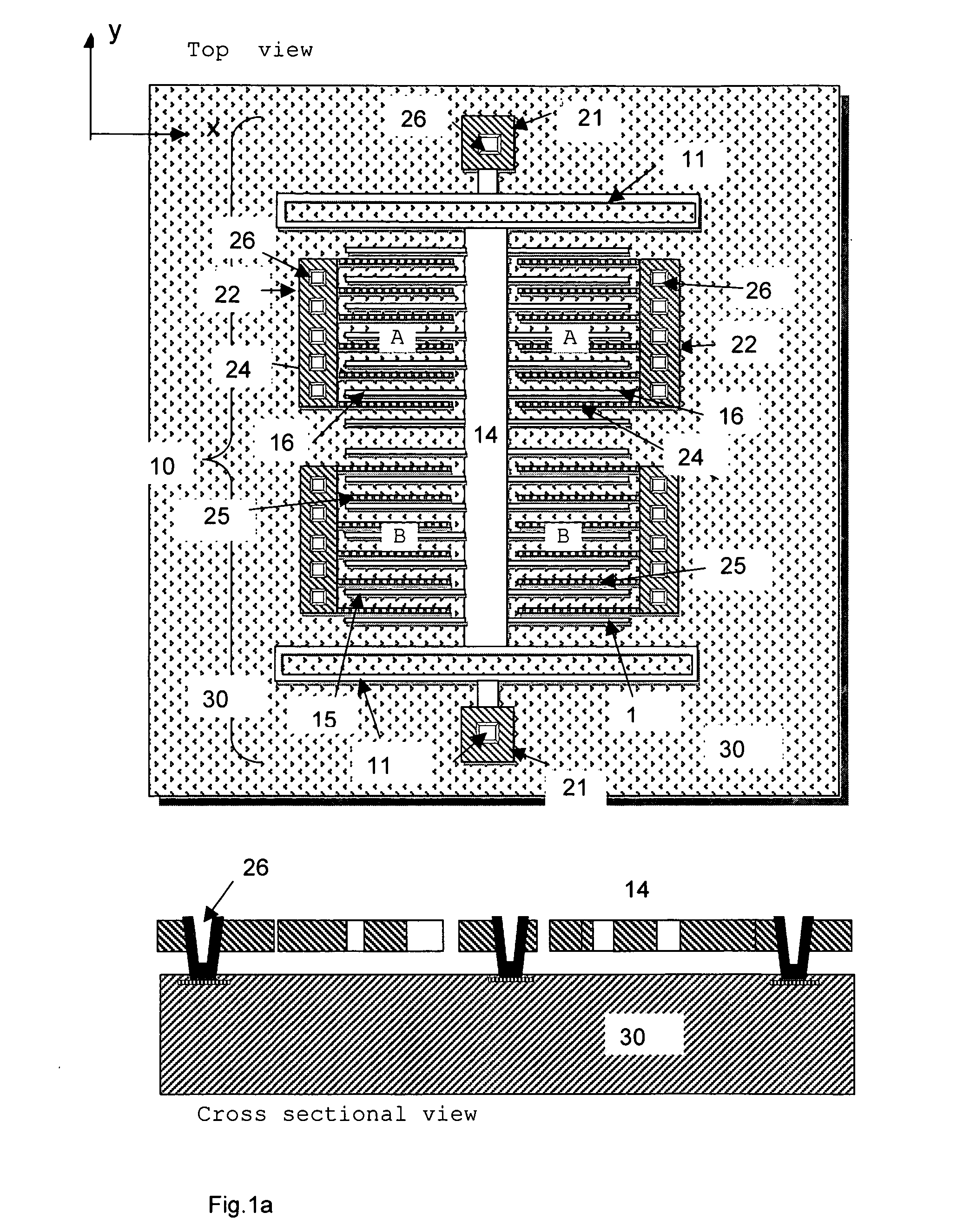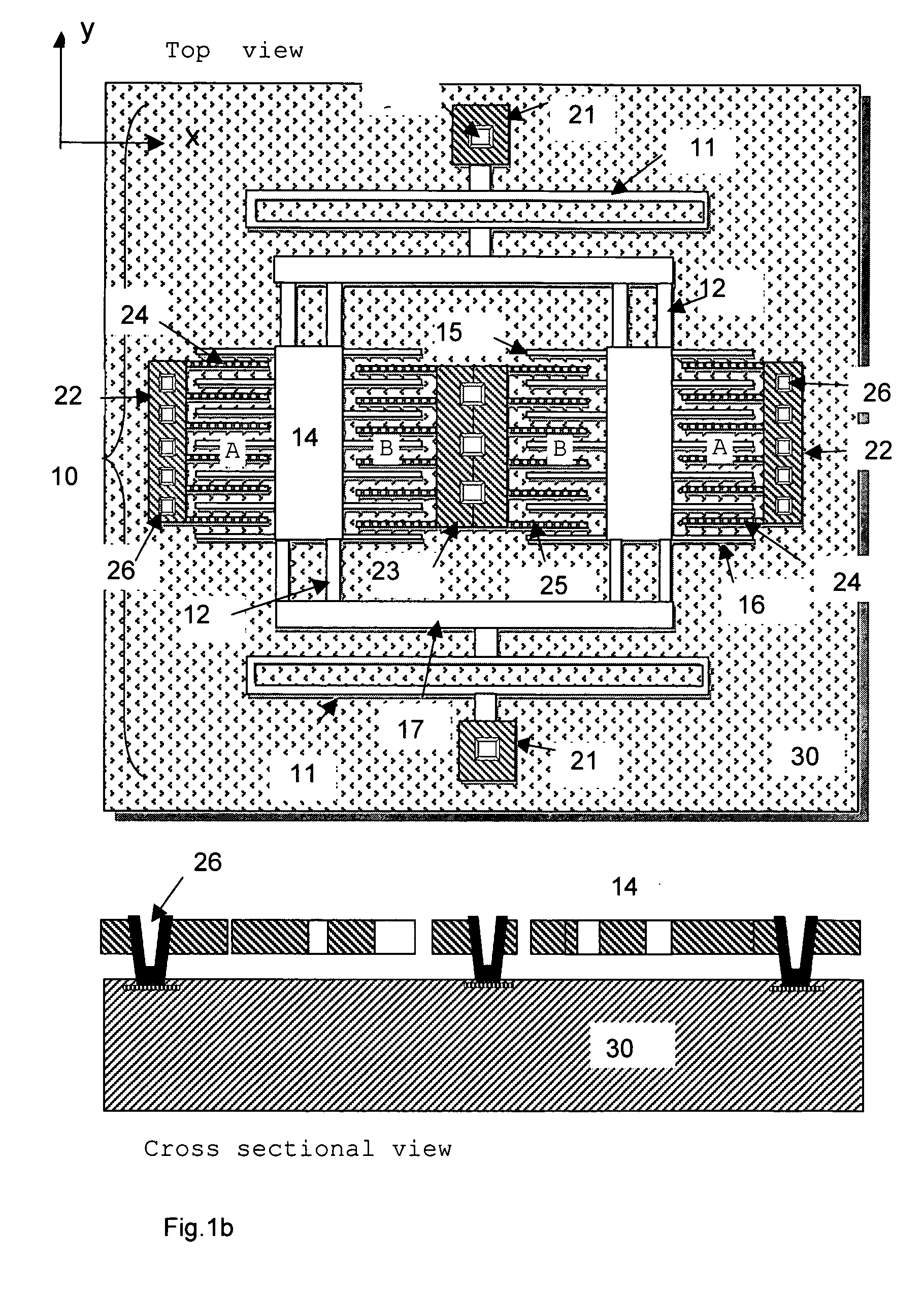Micro-electro mechanical device made from mono-crystalline silicon and method of manufacture therefore
a mono-crystalline silicon and micro-electromechanical technology, applied in the direction of microstructural technology, semiconductor/solid-state device manufacturing, electric devices, etc., can solve the problems of not able to withstand high temperature anneal, both dimension control and contamination control are major challenges, and the movable element deformation is not easy to be distorted, so as to improve the performance of micro-electro-mechanical inertial sensors
- Summary
- Abstract
- Description
- Claims
- Application Information
AI Technical Summary
Benefits of technology
Problems solved by technology
Method used
Image
Examples
Embodiment Construction
[0046]Reference is made to FIG. 1a, wherein an accelerometer embodiment of the present invention is depicted, in both a top view and a cross sectional view. This accelerometer MEMS device comprises suspended structures 10, anchored on a substrate 30, which is shown as the large rectangle in the background. The suspended structure is fabricated from a doped mono-crystalline silicon wafer; the substrate comprises electrical components, such as signal processing integrated circuitry, metal landing pads, metal strips and capacitive plates. The suspended structure 10 comprises movable elements and stationary elements. The movable elements include proof mass 14, having a movable, rectangular beam and a plurality of fingers 15 and 16 extending from both sides, and two flexure springs 11, which connect each end of the proof mass 14 to anchors. The stationary elements include anchoring plates 21 and 22 which fasten the suspended structures to the substrate 30, a plurality of stationary finge...
PUM
 Login to View More
Login to View More Abstract
Description
Claims
Application Information
 Login to View More
Login to View More - Generate Ideas
- Intellectual Property
- Life Sciences
- Materials
- Tech Scout
- Unparalleled Data Quality
- Higher Quality Content
- 60% Fewer Hallucinations
Browse by: Latest US Patents, China's latest patents, Technical Efficacy Thesaurus, Application Domain, Technology Topic, Popular Technical Reports.
© 2025 PatSnap. All rights reserved.Legal|Privacy policy|Modern Slavery Act Transparency Statement|Sitemap|About US| Contact US: help@patsnap.com



